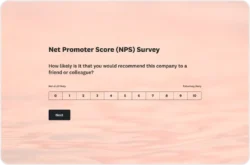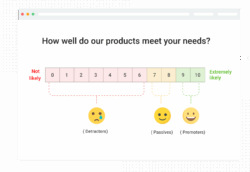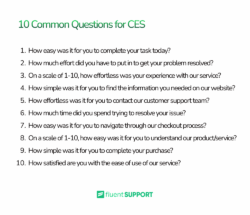Understanding your customers is at the heart of any successful business, and the Net Promoter Score (NPS) has become a gold standard for measuring customer loyalty. It’s deceptively simple: a single question asks how likely a customer is to recommend your product or service to a friend or colleague. While the score itself provides a valuable snapshot, truly unlocking its potential requires a deeper dive. Imagine not just knowing *what* the score is, but *why* a particular customer gave it.
This is where integrating customer information into your NPS process becomes incredibly powerful. It transforms a basic loyalty metric into a dynamic tool for strategic growth. By connecting survey responses with rich data about who your customers are, what they’ve purchased, or how they’ve interacted with your brand, you gain unparalleled context. This context is what allows you to move beyond general insights and pinpoint specific areas for improvement, tailor outreach, and ultimately build stronger, more lasting customer relationships.
The Power of Context: Why Customer Information Elevates Your NPS
The Net Promoter Score is fantastic for giving you a high-level view of customer sentiment. You can easily see your percentage of promoters, passives, and detractors, and track trends over time. This helps you understand overall loyalty shifts and gauge the impact of major business changes. However, when you’re looking at a raw score, it doesn’t tell you *who* is giving that score or *why* they feel that way. A detractor’s feedback from a long-term, high-value customer might require a different response than one from a new customer who just had a minor issue.
Without additional customer information, an NPS score is like a number on a scale without knowing what it’s measuring. You know the score, but you don’t know the story behind it. This lack of context can make it incredibly difficult to prioritize actions or even understand the root cause of positive or negative feedback. You might see a dip in scores, but without knowing which customer segments are affected, or what products they’re using, your corrective actions become broad guesses rather than targeted solutions.
This is precisely why enriching your NPS data with customer information is a game-changer. By attaching relevant details to each survey response, you can segment your feedback and identify patterns that would otherwise remain hidden. You can answer questions like: Are your new customers more or less loyal than your long-standing ones? Do customers who use a specific feature rate you higher? What’s the sentiment among customers who recently interacted with your support team? This kind of granular insight empowers you to make data-driven decisions that truly resonate with your customer base.
Imagine being able to filter all your detractor feedback by their purchase history, allowing you to see if there’s a common thread among unhappy customers who bought a certain product. Or segmenting your promoters by their location to identify regional strengths. This level of detail ensures that your follow-up actions are not just reactive, but strategically informed, leading to more effective customer recovery, stronger loyalty, and better product development.
Key Data Points to Consider
- **Purchase History:** What products or services has the customer bought? How recently? What was their total spend?
- **Customer Segment:** Are they an enterprise client, small business, individual consumer? What industry are they in?
- **Interaction History:** When was their last interaction with customer support, sales, or marketing? What was the nature of that interaction?
- **Product/Feature Usage:** Which specific features of your product do they use most or least? How long have they been a user?
- **Demographics/Geographics:** (Where relevant) Age range, location, or other non-identifying demographic data that helps understand broader trends.
Crafting Your Ideal NPS Survey Template with Customer Information Integration
Designing an effective NPS survey template that incorporates customer information isn’t about adding twenty more questions to the survey itself. In fact, that would lead to significant survey fatigue and lower response rates. Instead, the real magic happens behind the scenes. It’s about intelligently linking the NPS response to existing customer data you already hold in your CRM, marketing automation platform, or data warehouse. This approach ensures a seamless experience for the customer while providing you with invaluable context on the backend.
The core of any NPS survey template remains the “likelihood to recommend” question, followed by an open-ended question asking for the reason behind their score. This qualitative feedback is crucial. However, the true power of an nps survey template customer information solution comes from associating that response with predefined customer attributes. When a customer submits their score and feedback, your system should automatically pull in details like their customer ID, last purchase date, segment, and any recent support tickets.
To implement this, you’ll typically set up your survey platform to capture or pass these unique identifiers. For instance, if you send surveys via email, you can embed unique customer IDs in the survey link. When the customer clicks, the system knows exactly who they are and can associate their response with their detailed profile. This automated linking not only saves time but also ensures accuracy and consistency in your data, preventing manual errors and ensuring every piece of feedback is enriched with relevant context.
Furthermore, consider how you’ll present and analyze this rich data. Your chosen NPS platform or business intelligence tools should allow you to easily filter, segment, and visualize your NPS scores by these customer attributes. This means you can quickly identify which customer segments are happiest, which are struggling, and what specific factors might be influencing their loyalty. This level of insight allows your teams—from product development to customer success—to take highly targeted and effective actions, moving beyond generic improvements to address specific pain points for specific customer groups.
Embracing a customer information-rich NPS template means moving beyond just tracking a number. It means deeply understanding the “who” and “why” behind your customer loyalty, enabling your business to deliver more personalized experiences and strategically allocate resources to areas that will yield the greatest impact on customer satisfaction and retention. It’s about turning data into actionable intelligence that drives real business growth and fosters long-term customer relationships.



